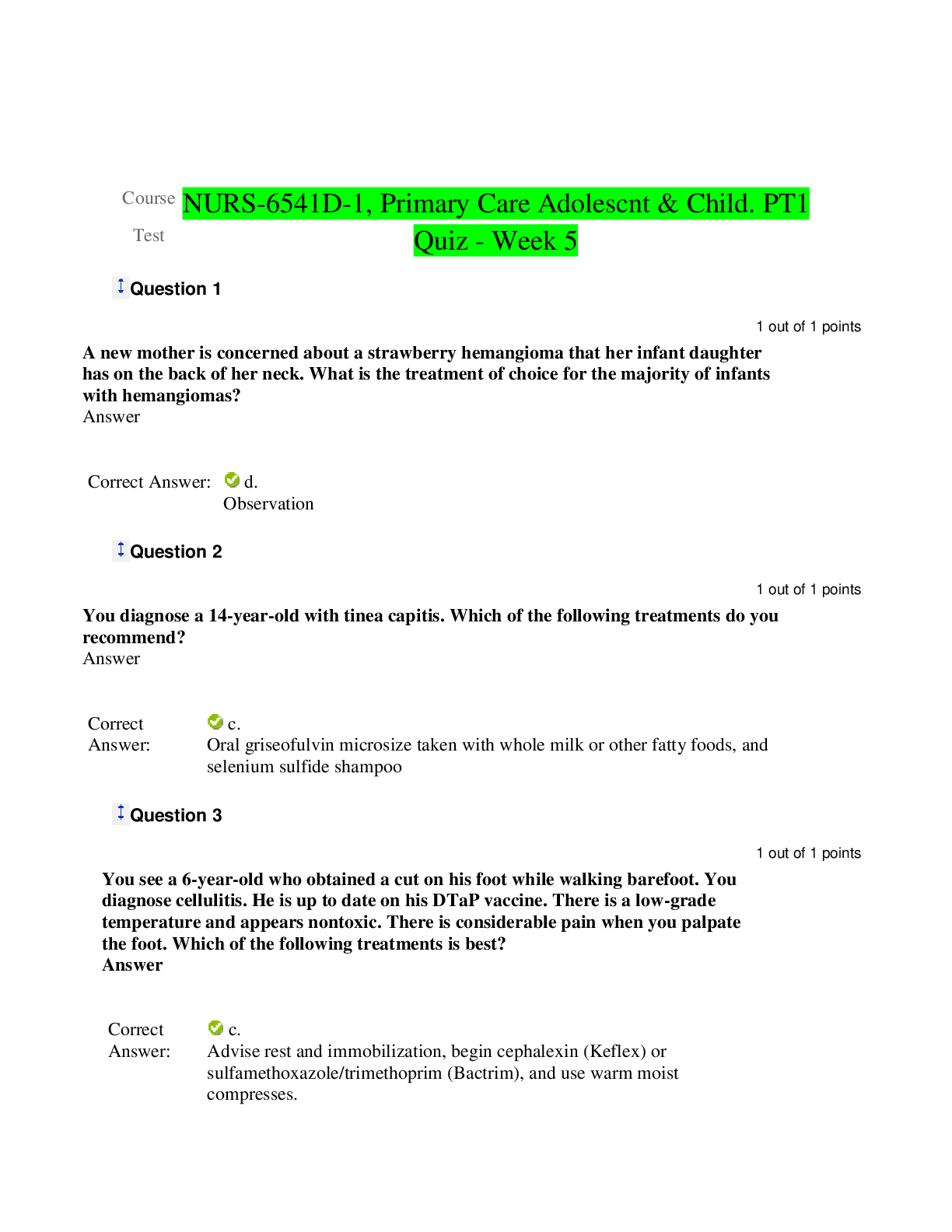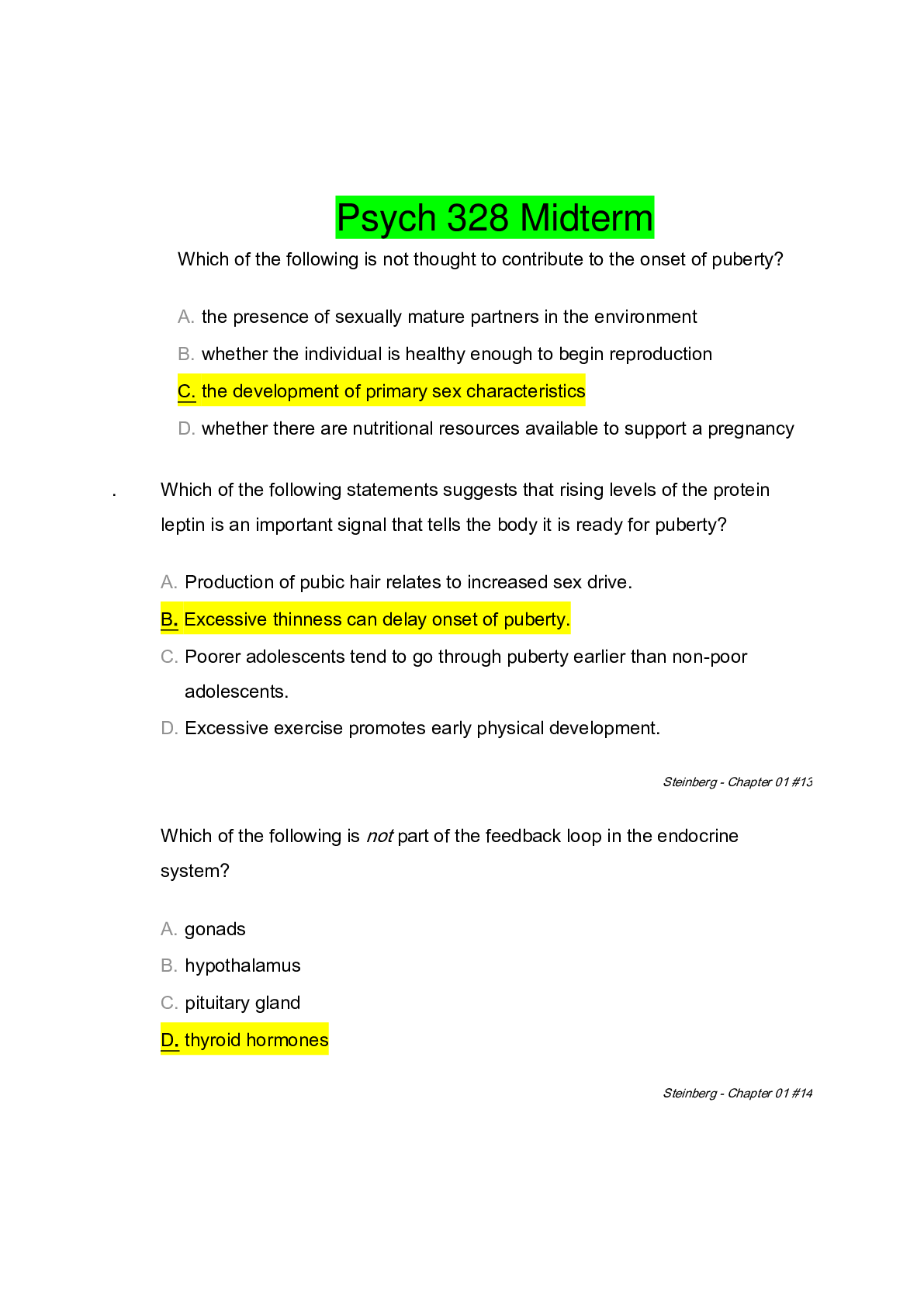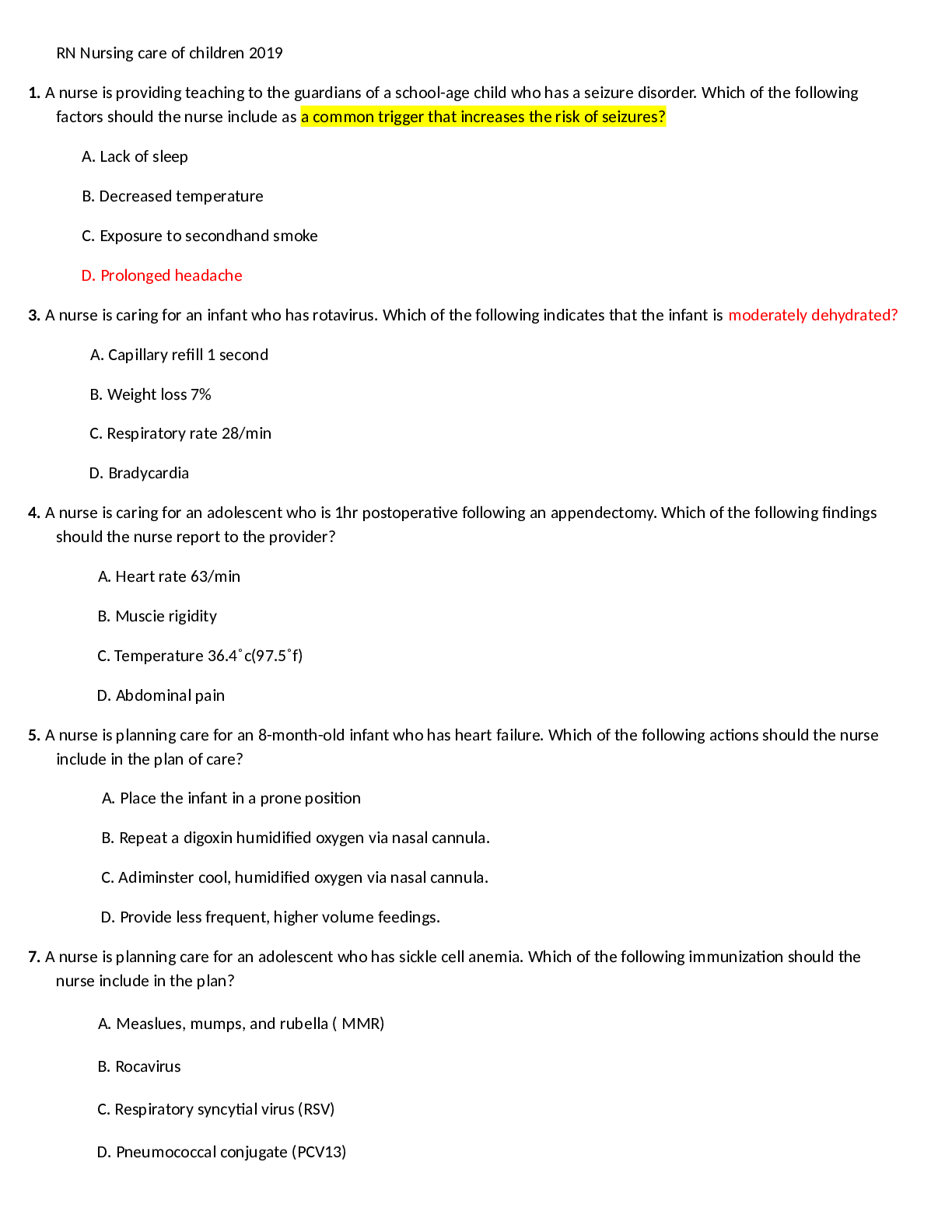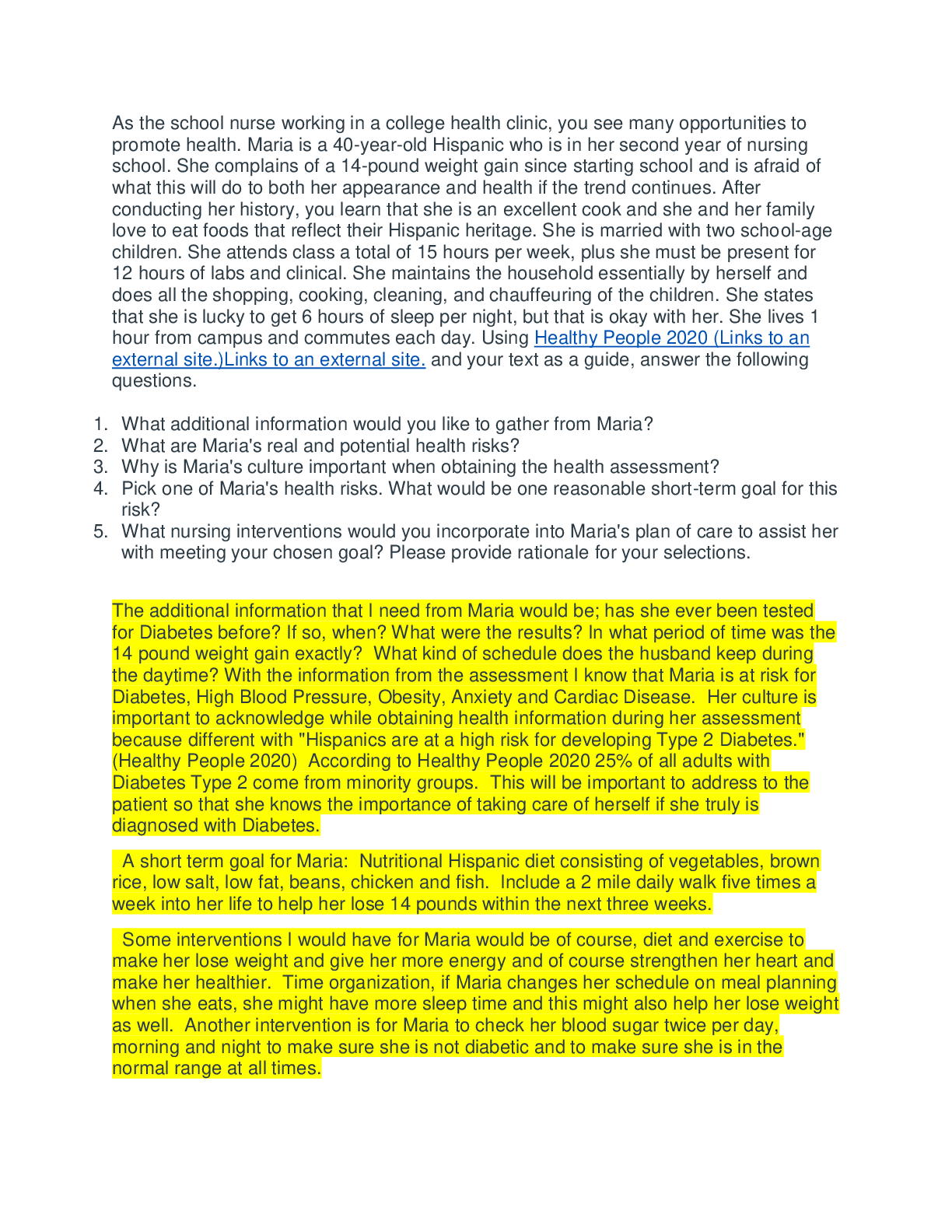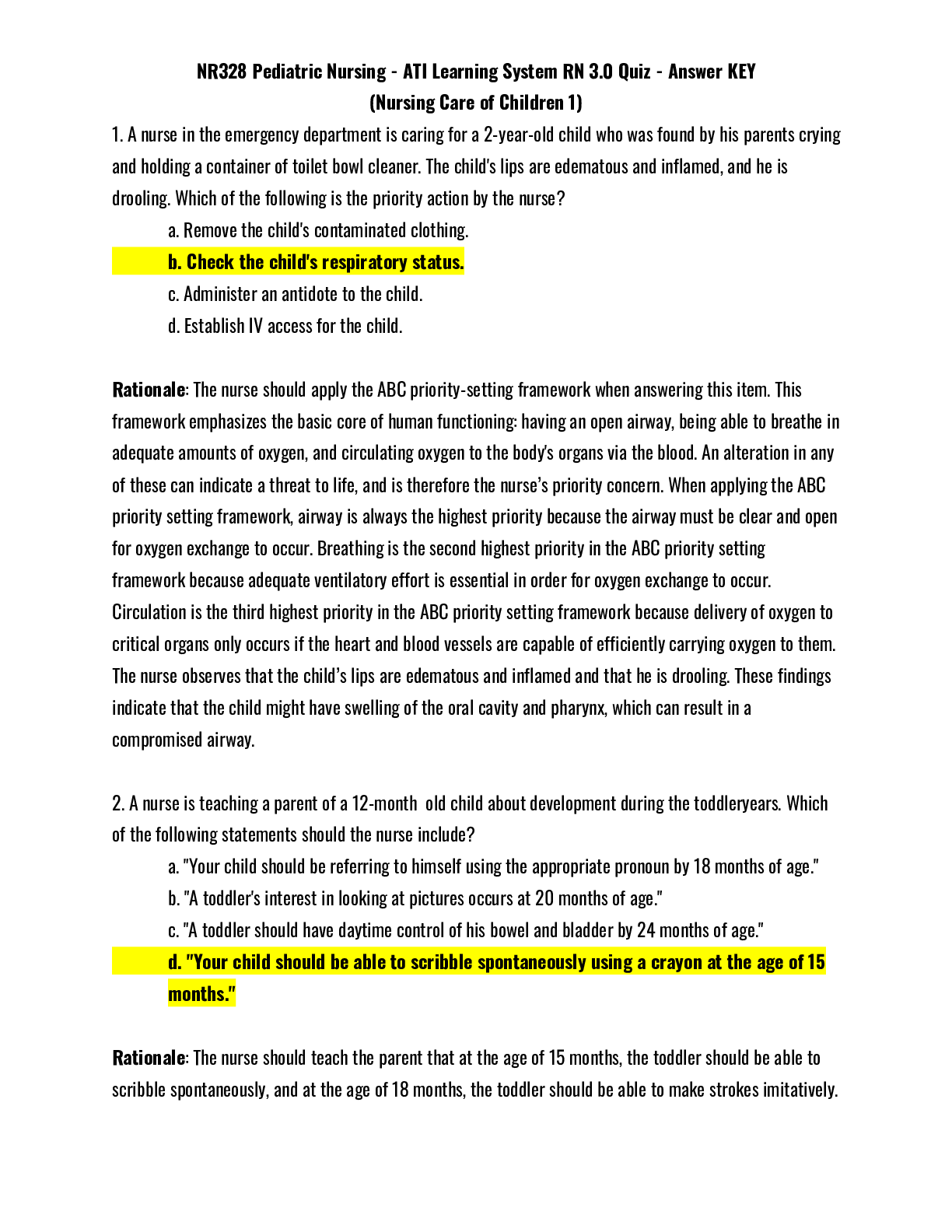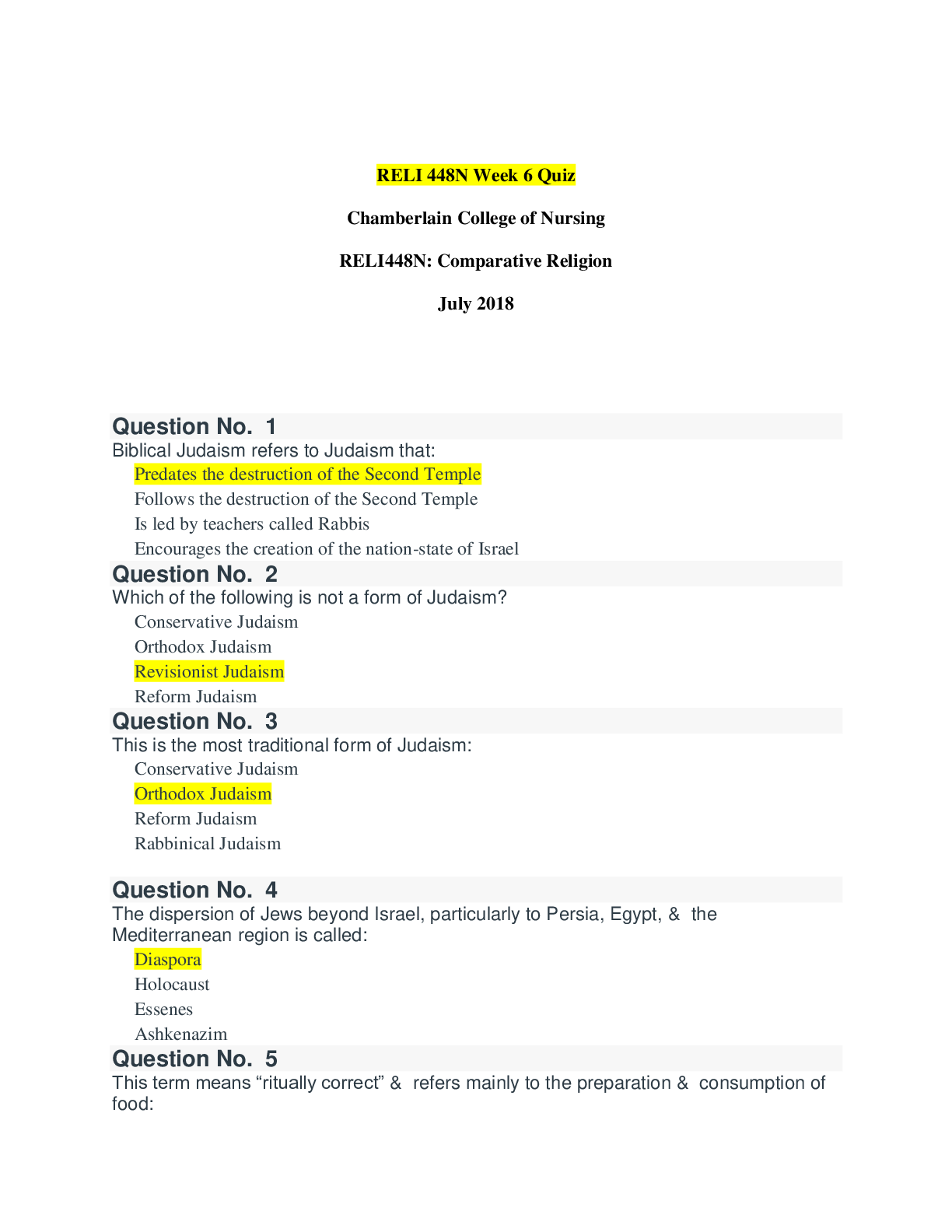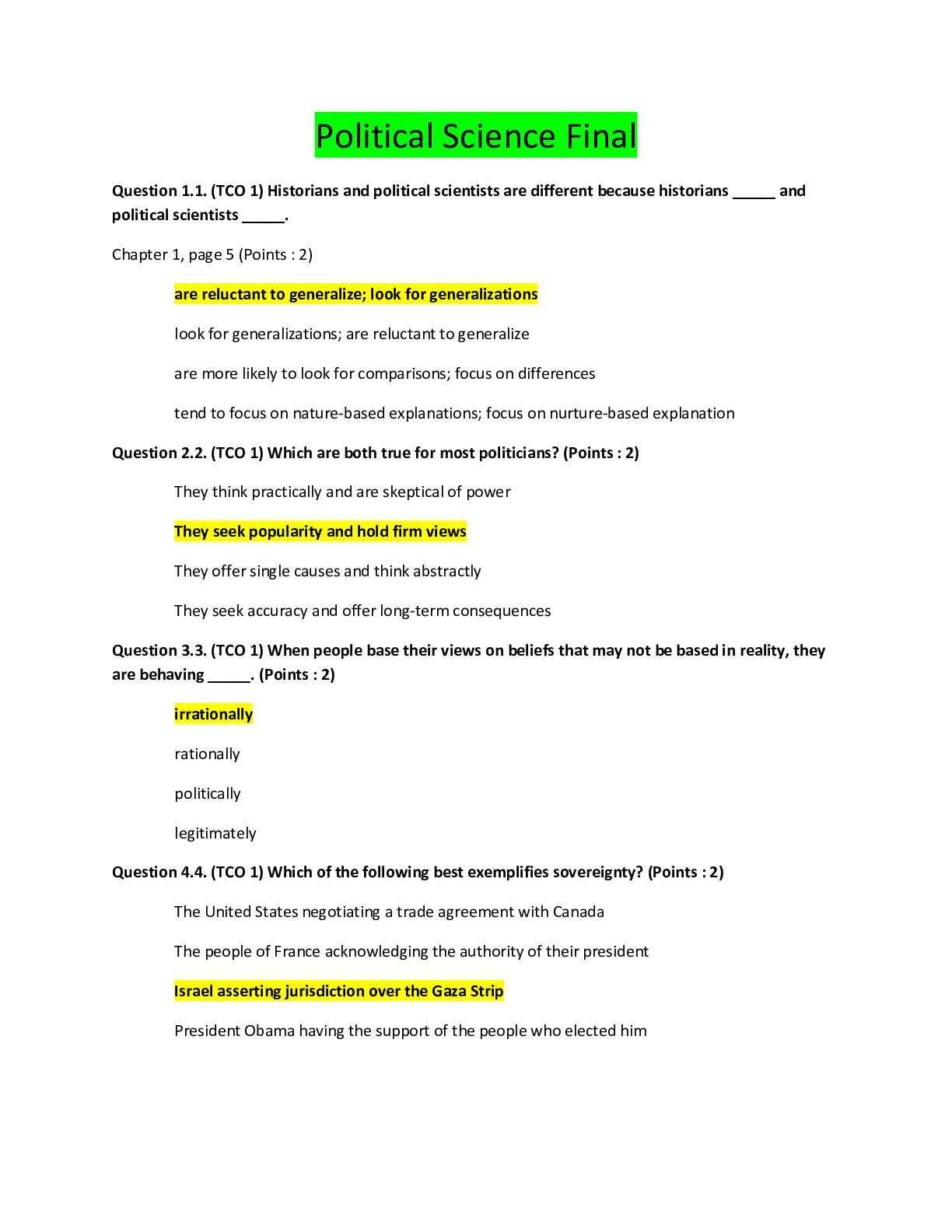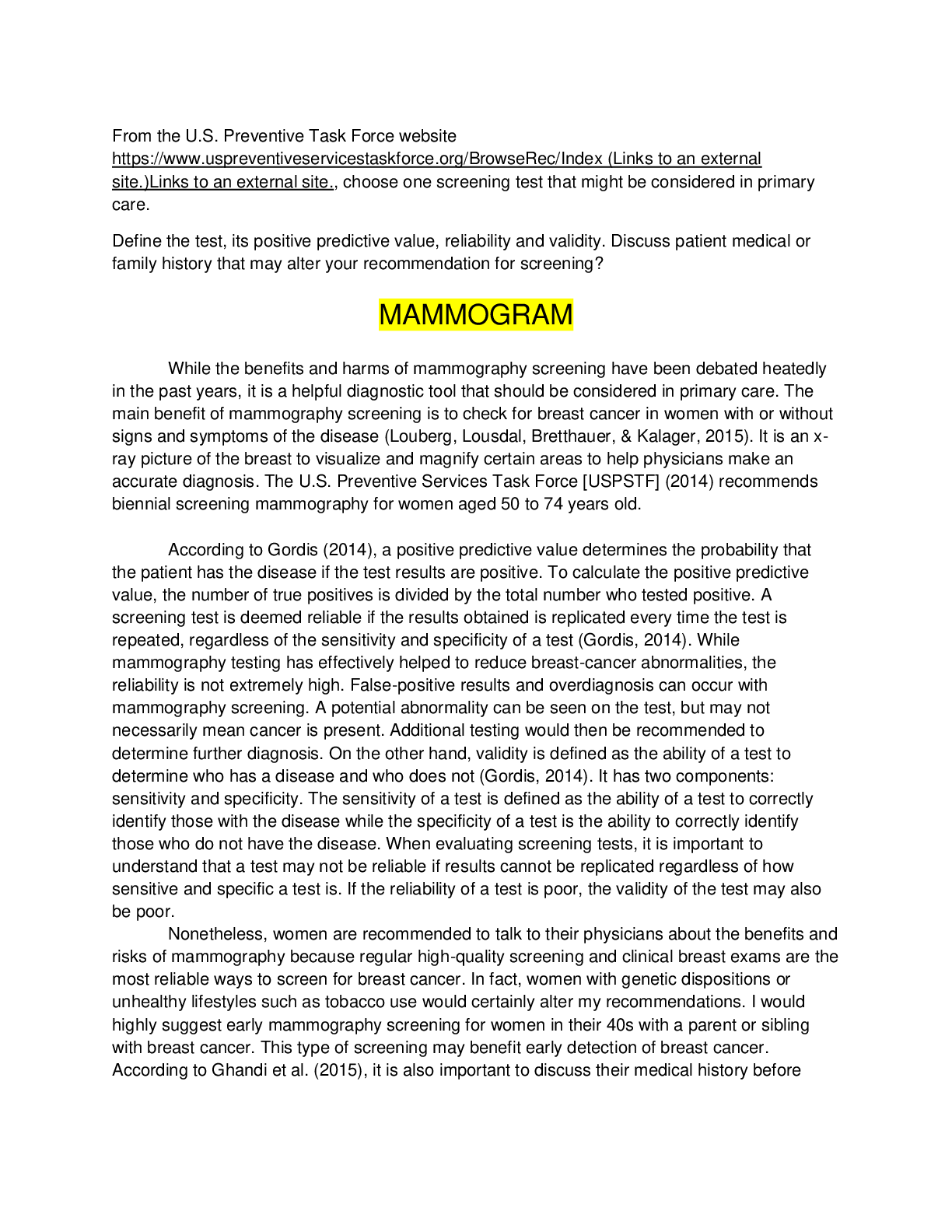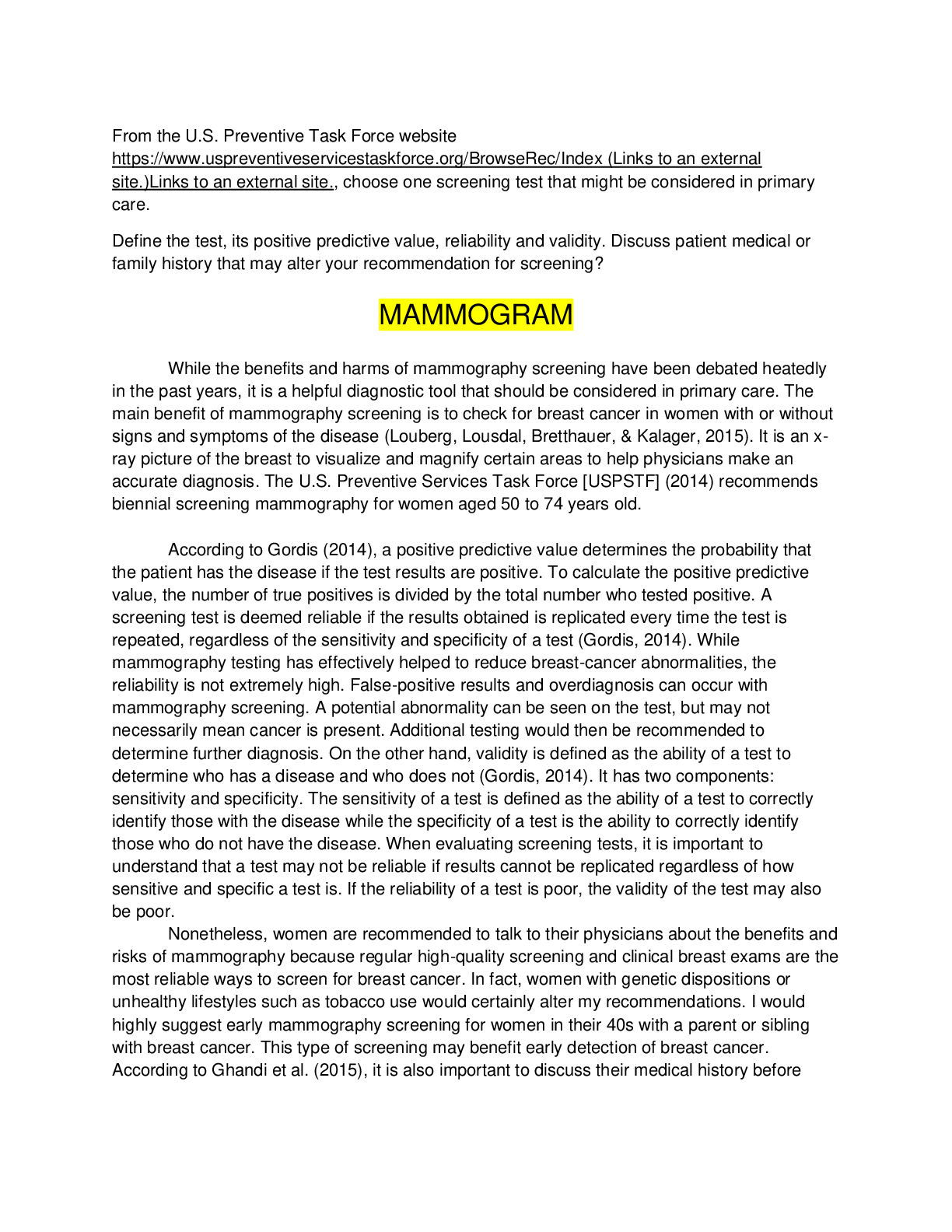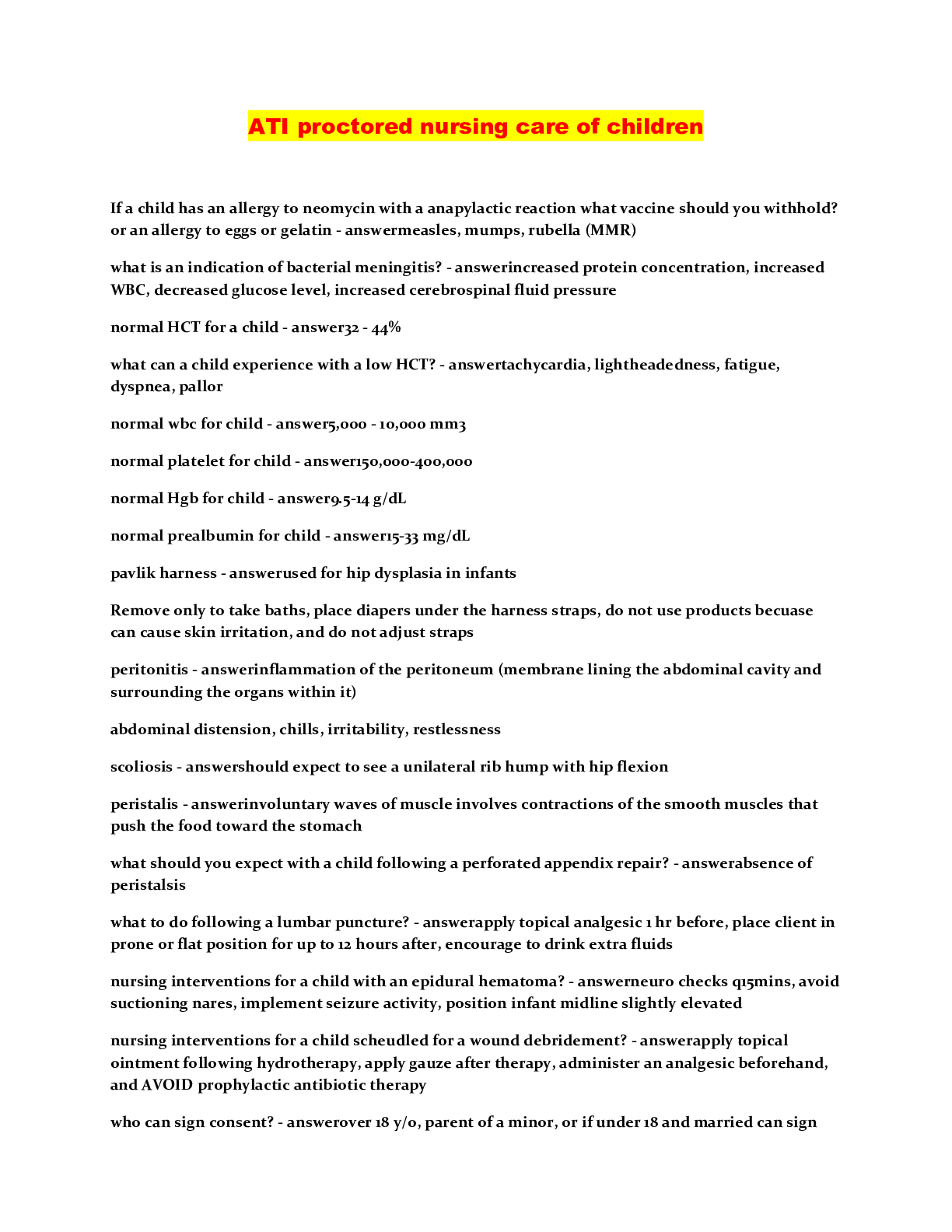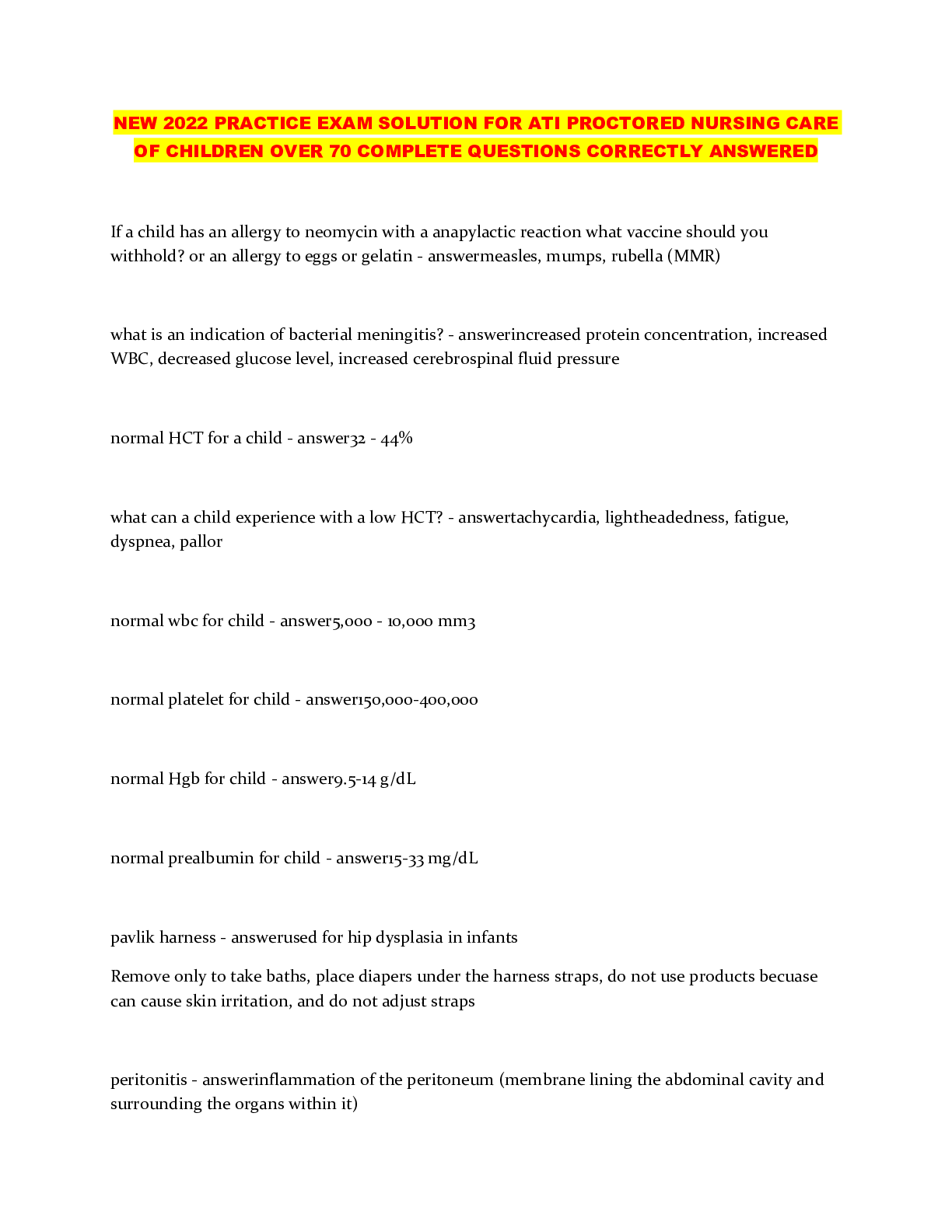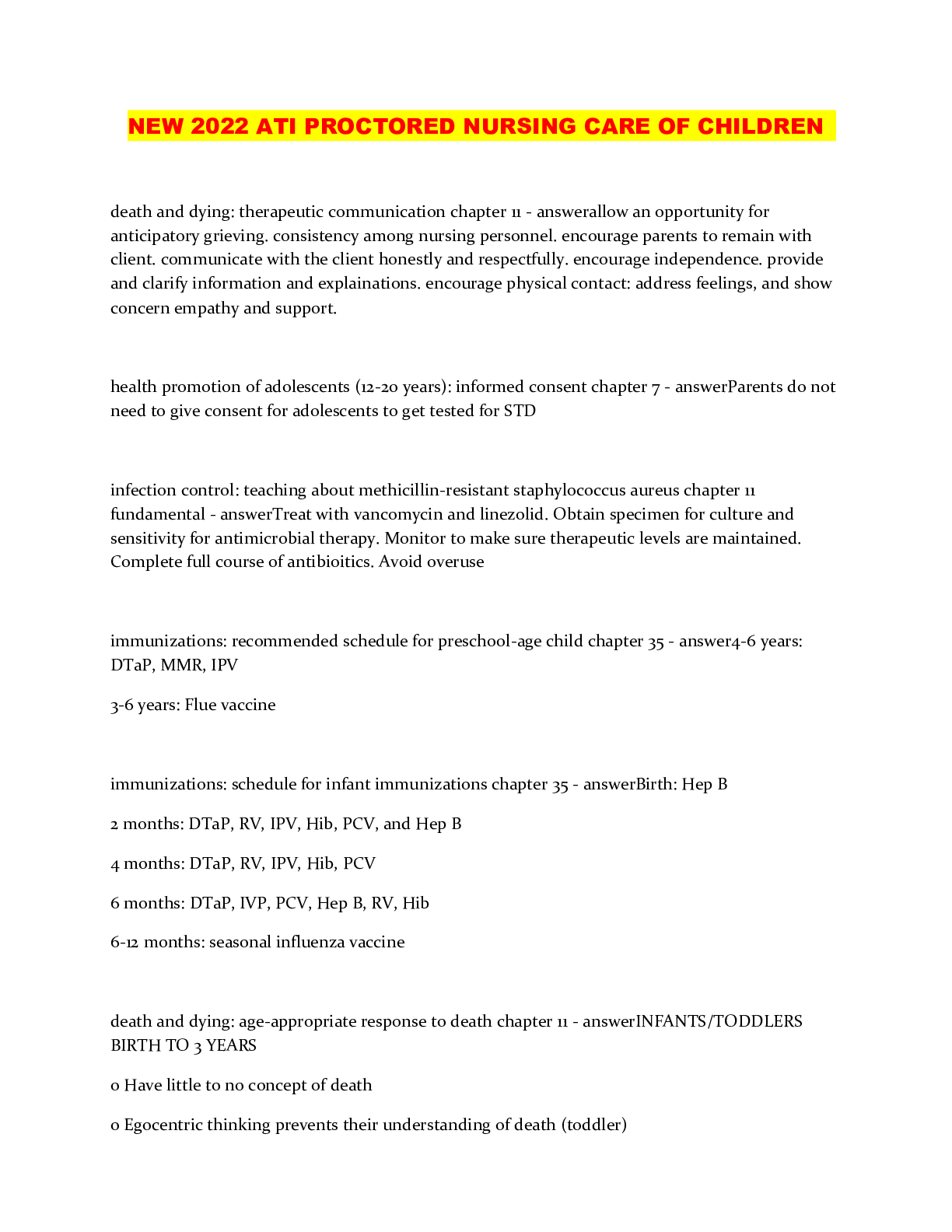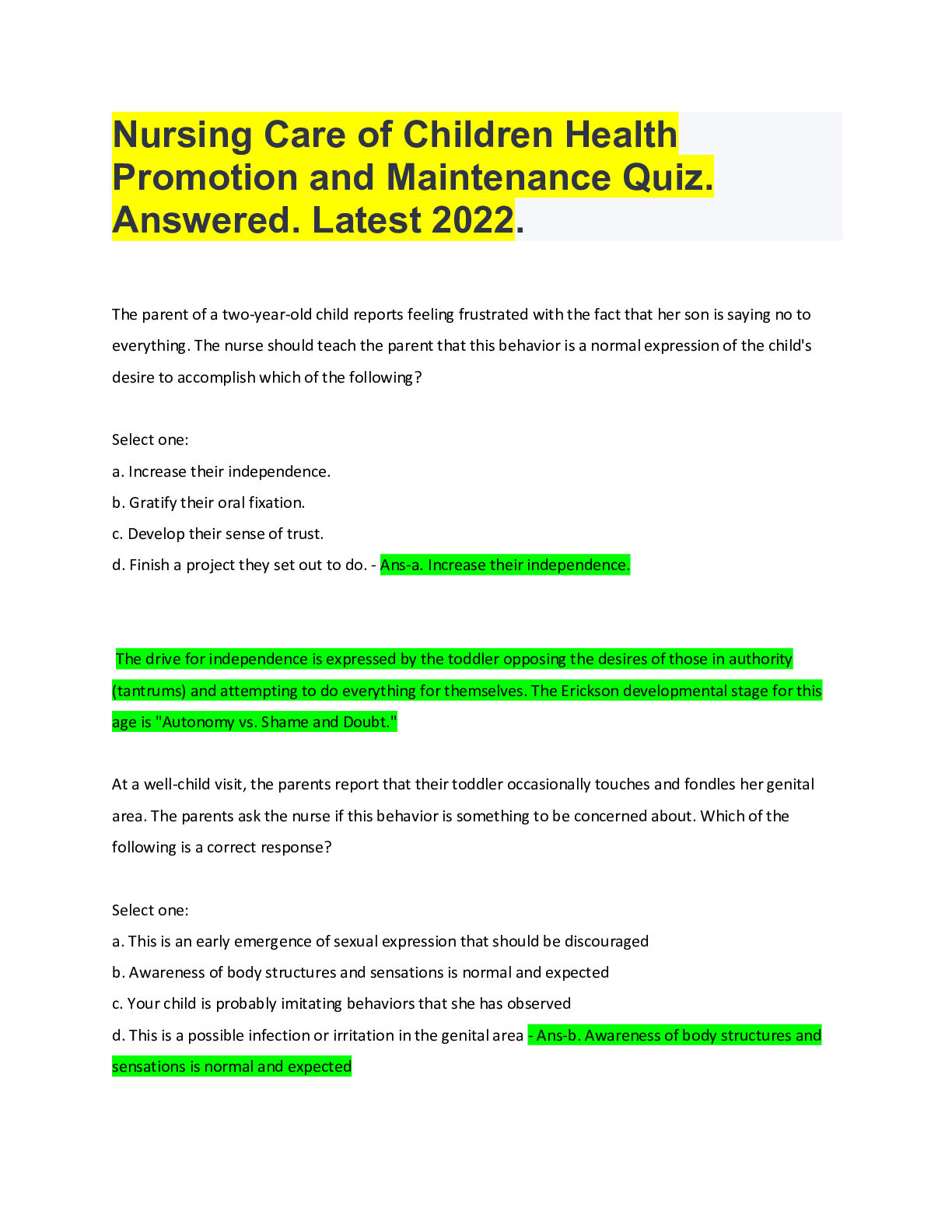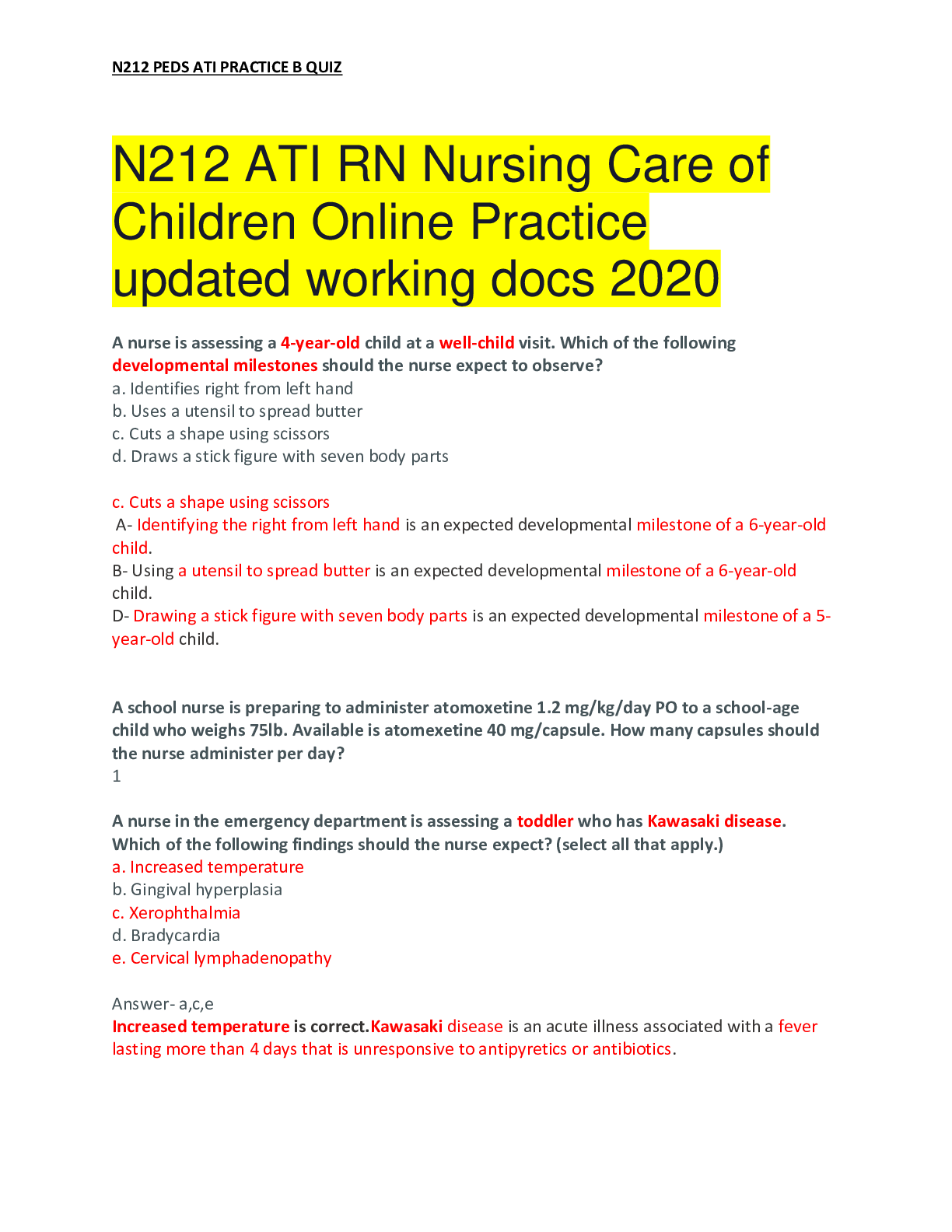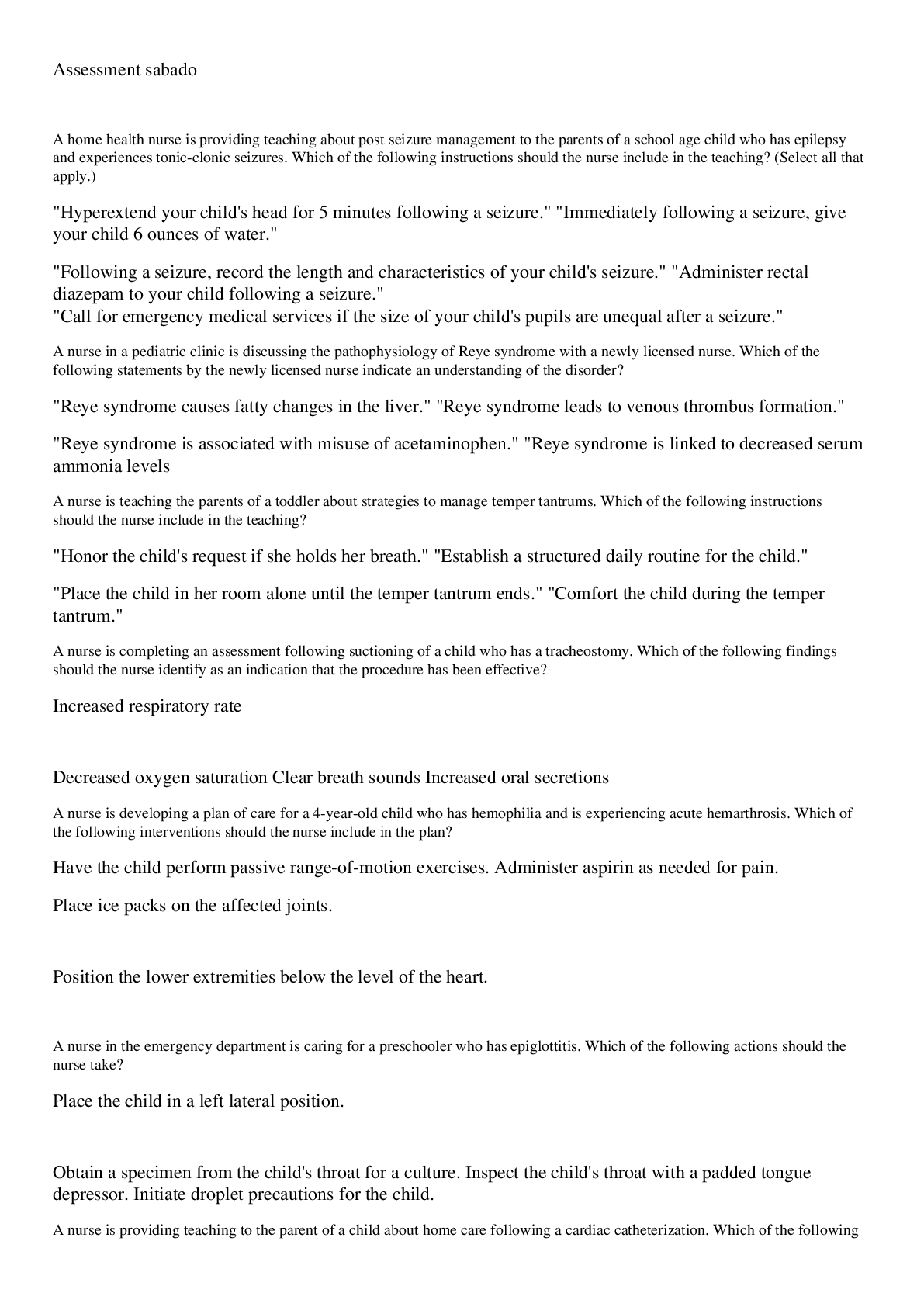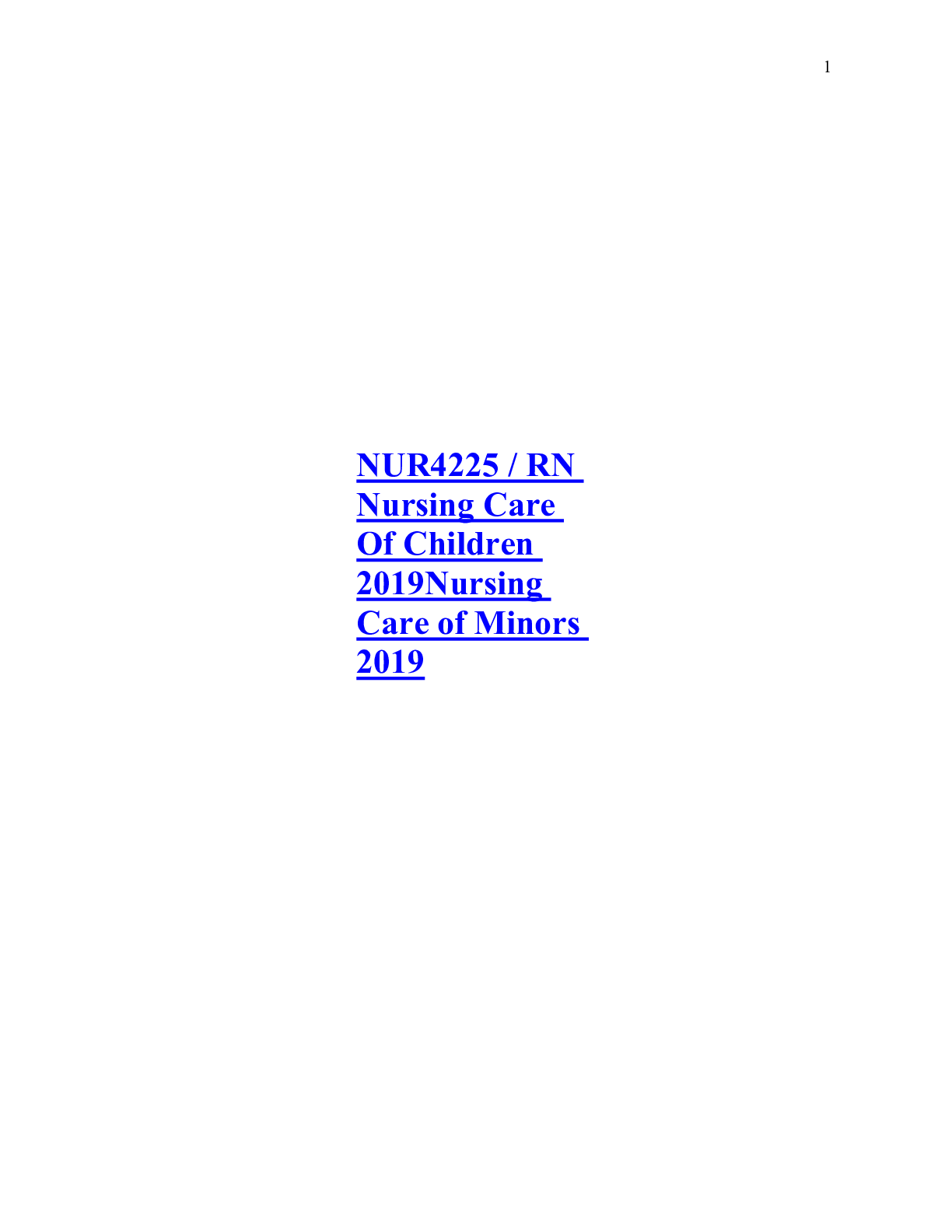*NURSING > QUESTIONS & ANSWERS > Chamberlain College Of Nursing > NR 328 Nursing Care of Children Review of Concept (Graded A) (All)
Chamberlain College Of Nursing > NR 328 Nursing Care of Children Review of Concept (Graded A)
Document Content and Description Below
Nursing Care of Children Review of Concept 1. A nurse is educating the parent of a 9-month-old infant who has recently been diagnosed with cerebral palsy. Which of the following statements by the p... arent should indicate to the nurse that teaching has been effective? 2. A nurse is caring for a child who is in Buck's traction. Which of the following should the nurse recognize as an appropriate intervention to prevent complications? 3. A nurse is providing diabetic teaching to a 12-year-old child who appears apprehensive during the teaching. Which of the following actions should the nurse recognize as appropriate in this situation? 4. A nurse on the pediatric unit is caring for four clients who all have assessments ordered in the morning. Which of the following values should the nurse report to a client's primary care provider immediately? 5. A nurse is caring for a 3 year old child who is scheduled for a nephrectomy. When preparing preoperatively, which of the following actions should the nurse recognize as appropriate? 6. A nurse is caring for a child who is receiving chemotherapy with anorexia and nausea. Which of the following interventions should the nurse recognize as the most appropriate for the child experiencing these symptoms? 7. The parent of a toddler asks the nurse why the toddler's abdomen protrudes. Which of the following statements would be an appropriate response by the nurse? 8. A nurse is caring for a child who will be receiving PE tubes in the morning. The nurse is teaching the parents how to care for the tubes upon discharge. Which of the following statements should indicate to the nurse that the teaching was understood? 9. A nurse is caring for a child who has cellulitis and a rectal temperature of 102.2° F (39° C). The child has an order for acetaminophen (Tylenol) 280 mg by mouth. The label on the bottle reads 160 mg/5 mL. Which of the following is the correct dose the nurse should dispense to the child? 10. A nurse is caring for a child who is a vegetarian and has sustained superficial partial-thickness burns on her legs. Which of the following diet choices would be appropriate for this child? 11. A nurse is performing a yearly physical on an adolescent. The adolescent's parent asks about the adolescent's developmental needs. Which of the following statements by the parent should the nurse investigate further? 12. A nurse is caring for a child who has superficial partial-thickness burns over 50% of his body. In planning for the nutritional needs of the child, which of the following should to nurse recognize as an appropriate intervention? 13. A nurse is caring for a child who has cystic fibrosis. Which of the following assessments should the nurse recognize as a priority to report to the primary care provider? 14. A nurse is preparing a 7 year old child for a tonsillectomy. Which of the following nursing actions would be appropriate in this preparation? 15. A nurse is caring for a child who has tetralogy of Fallot preoperatively. Which of following laboratory values should the nurse expect to find? 16. A school nurse is assisting a child who has been stung by a bee. The child's hand is swelling and the nurse notes that the child has allergies to insect stings. Which of the following manifestations should the nurse recognize with anaphylaxis? (Select all that apply.) 17. A nurse is caring for a child who is undergoing a bone marrow aspiration. Which response by the child should indicate to the nurse that the teaching has been effective? 18. A nurse is preparing to administer an injection to a 2 month old infant. Which of the following is an appropriate site for the nurse to give the injection? 19. A nurse is caring for a toddler who has asthma. The parents are concerned about the toddler's reaction to the hospitalization. Which of the following nursing actions should the nurse perform to decrease the stress experienced by the toddler? 20. A school nurse is assessing a child who returned to school following a case of mononucleosis. The child has a note from his primary care provider excusing him from gym class. Which of the following should the nurse recognize as the most appropriate reason for this excuse? 21. A nurse is caring for a 10-year-old child who is obese. Which of the following menu choices is the most appropriate for this child? 22. A nurse is assessing an adolescent who sustained a broken tibia while playing football. Following the application of a fiberglass cast, the client complains of pain and a tingling feeling in the limb. Which of the following is the most appropriate action for the nurse to take? 23. A nurse is caring for a 7-year-old child diagnosed with glomerulonephritis. The child has decreased urinary output and a blood pressure of 160/78 mm Hg. The child is receiving hydralazine (Apresoline). Which of the following lunch choices should the nurse recognize as most appropriate? 24. A charge nurse is assigning rooms for admissions. An 8 year old child who is admitted with sickle cell anemia and is dehydrated. Which of the following is an appropriate room assignment for this child? 25. A nurse is caring for a child who has been brought to the emergency room after ingesting a bottle of acetaminophen (Tylenol). Which of the following medications should the nurse anticipate administering? 26. A nurse receives the following laboratory values on a 2-month-old child who has cyanotic heart disease. The results are a hemoglobin of 17 g/dL and a hematocrit of 51%. Which of the following statements by the nurse reflects the most appropriate interpretation of this information? 27. A nurse is teaching the parents of a newborn who has congenital hypothyroidism about care of their child. Which of the following should the nurse recommend to the parents? 28. A nurse is caring for a child who has epistaxis. Which of the following actions would be the most appropriate for the nurse to take? 29. A nurse is caring for a 10-year-old child who is postoperative abdominal surgery and was medicated 6 hr ago. When assessing the child, the nurse finds the child quiet and not interacting with family. Which of the following is an appropriate nursing action? 30. A nurse is caring for a child who has acute glomerulonephritis. Which of the following actions should the nurse recognize as appropriate in the care of this child? 31. A nurse at the immunization clinic is preparing to administer injections to a 5 year old child. Which of the following is the appropriate injection for the nurse to administer? 32. A nurse is admitting a child who has a possible diagnosis of leukemia. Which of the following tests is the most appropriate for the nurse to consider when confirming a diagnosis of leukemia? 33. A 10 month old infant has been hospitalized four times for a total of 42 days. The nurse notices that the infant does not seem upset when the parents leave. Which of the following should the nurse recognize as an appropriate explanation for this behavior? 34. A nurse is caring for a 6-month-old infant who has colic and vomiting who will be undergoing testing to rule out intussusception. Which of the following would be the appropriate treatment for intussusception? 35. A nurse is caring for a child who has a vesicular rash. The parent asks the nurse what illness can cause the rash. Which of the following is the most appropriate response for the nurse to give? 36. A nurse is admitting a child who has an exacerbation of cystic fibrosis. The nurse should expect to find which of the following assessments? 37. A nurse is admitting a toddler brought to the hospital for circumferential burns. The history given and burn markings do not correlate, therefore, child abuse is suspected. Which of the following should the nurse consider the most important to include in the documentation? 38. A nurse is caring for a child who is admitted with swollen, painful joints and is diagnosed with rheumatic fever. When educating the child's parent about rheumatic fever, which of the following statements by the nurse would be appropriate? 39. A nurse is caring for a child who has cerebral palsy who is scheduled for orthopedic surgery. Which of the following strategies should the nurse plan to include in the initial plan of care? 40. A nurse is caring for a 6-year-old child who is receiving chemotherapy. The child has a platelet count of 20,000/mm3. Which of the following should the nurse recognize as the appropriate intervention for a child with this platelet count? 41. A parent calls a primary care provider's office and says her child has a respiratory infection and a temperature of 39° C (102.2° F). The nurse instructs the parent to give the child 240 mg of acetaminophen (Tylenol). The label on the bottle reads 160 mg/5 mL. The nurse should instruct the parent to administer which of the following doses? 42. A nurse is planning care for a child who is autistic. Which of the following goals is of primary importance in the care of this child? 43. A nurse is providing education on poisoning prevention to a group of parents of toddlers. Which of the following would be an appropriate statement by the nurse? 44. A nurse is caring for a child who has frequent urinary tract infections. When educating the parent on the prevention of urinary tract infections, which of the following instructions should the nurse include in the teaching? 45. A nurse is conducting postoperative teaching for the parent of a 3-month-old infant who is recovering from an umbilical hernia repair. Which of the following statements by the parent indicates an understanding of the teaching 46. A nurse is caring for a 3-year-old child who has persistent otitis media. When taking the history of the child from her parent, which of the following would be the most appropriate for the nurse to ask regarding the child's recurrent otitis media? 47. A nurse is caring for a child who has a diagnosis of iron deficiency anemia. Which of the following instructions would be appropriate for the nurse to give to the parents? 48. A nurse is caring for four children who have congenital heart disease. Based on the pathophysiology of the disorders, which of the following should the nurse recognize would present with cyanosis? 49. A nurse is planning care for a 2-day-old infant who has a myelomeningocele. Which of the following nursing measures should take highest priority in the immediate postoperative period? [Show More]
Last updated: 1 year ago
Preview 1 out of 6 pages
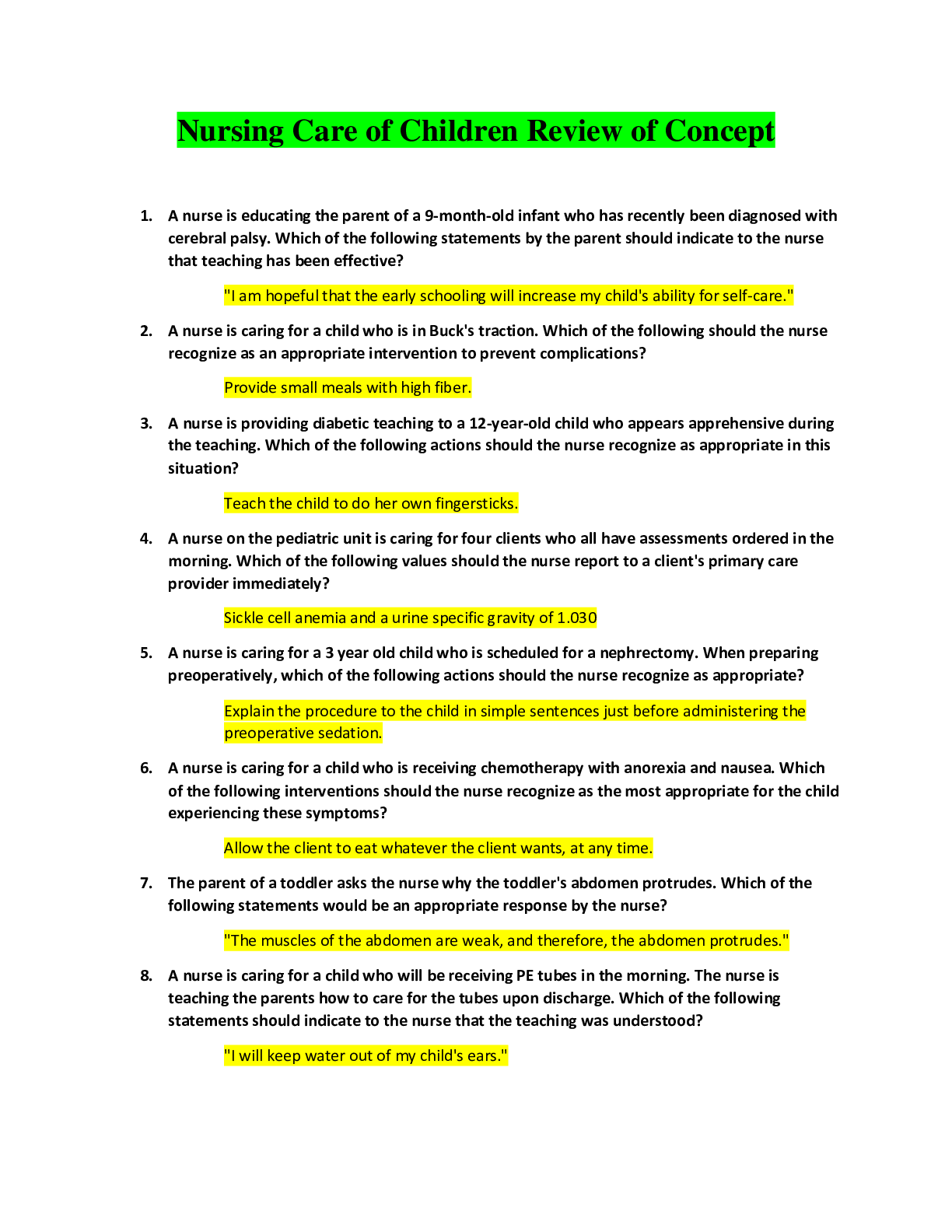
Reviews( 0 )
Document information
Connected school, study & course
About the document
Uploaded On
Apr 26, 2020
Number of pages
6
Written in
Additional information
This document has been written for:
Uploaded
Apr 26, 2020
Downloads
0
Views
103













